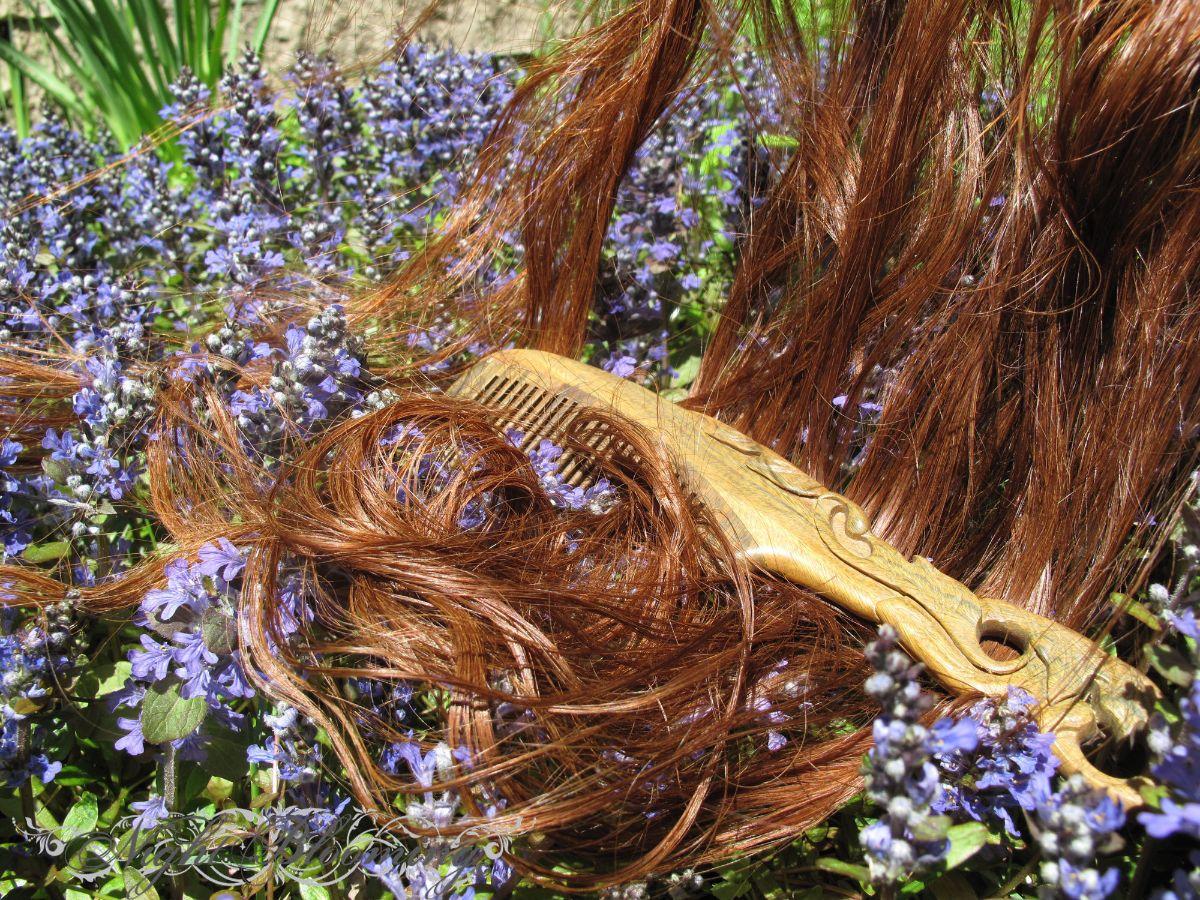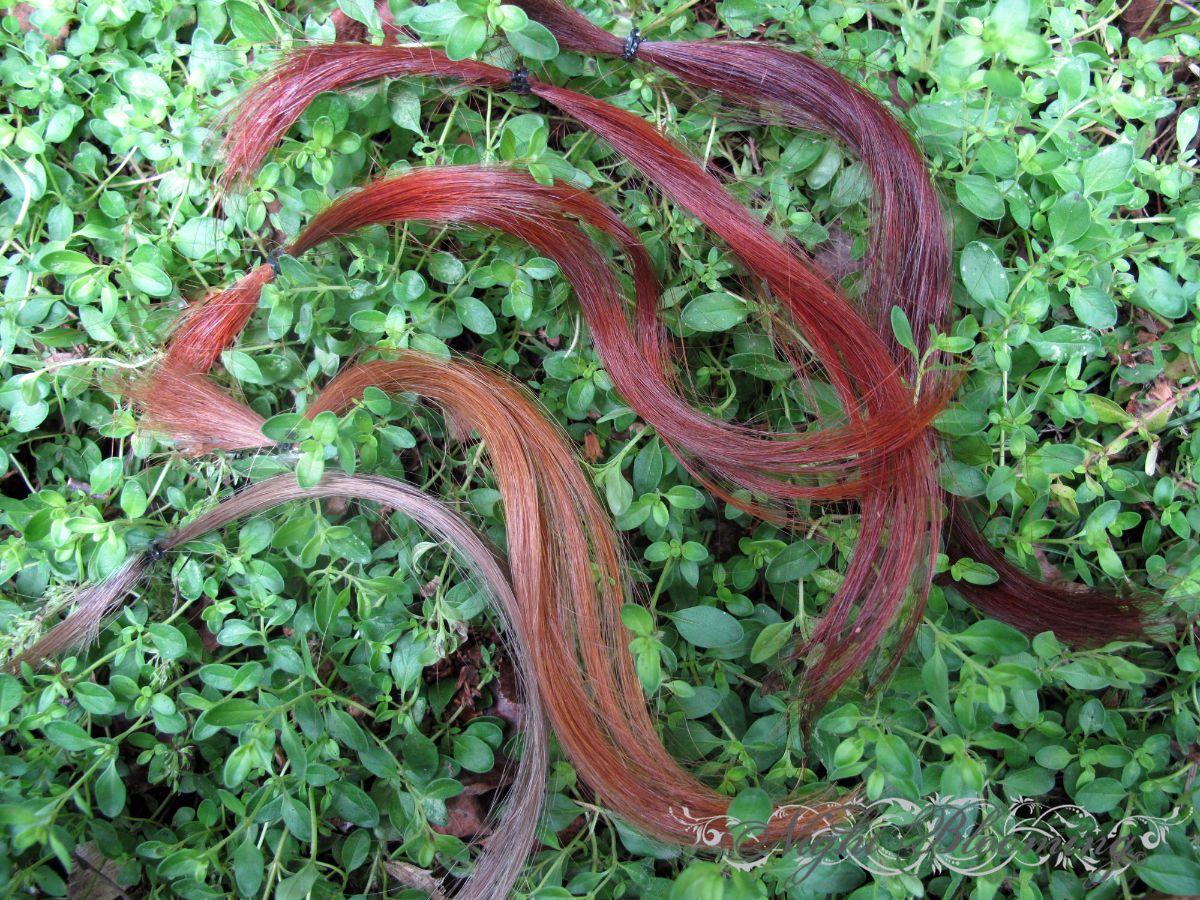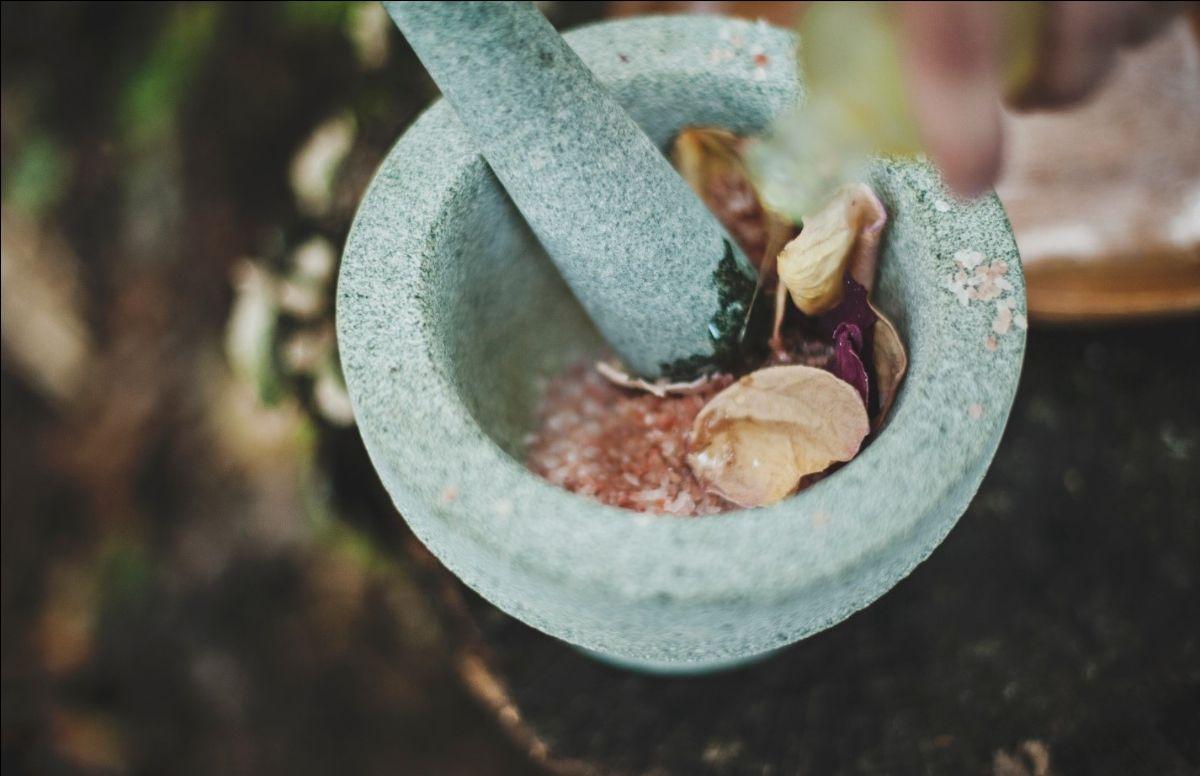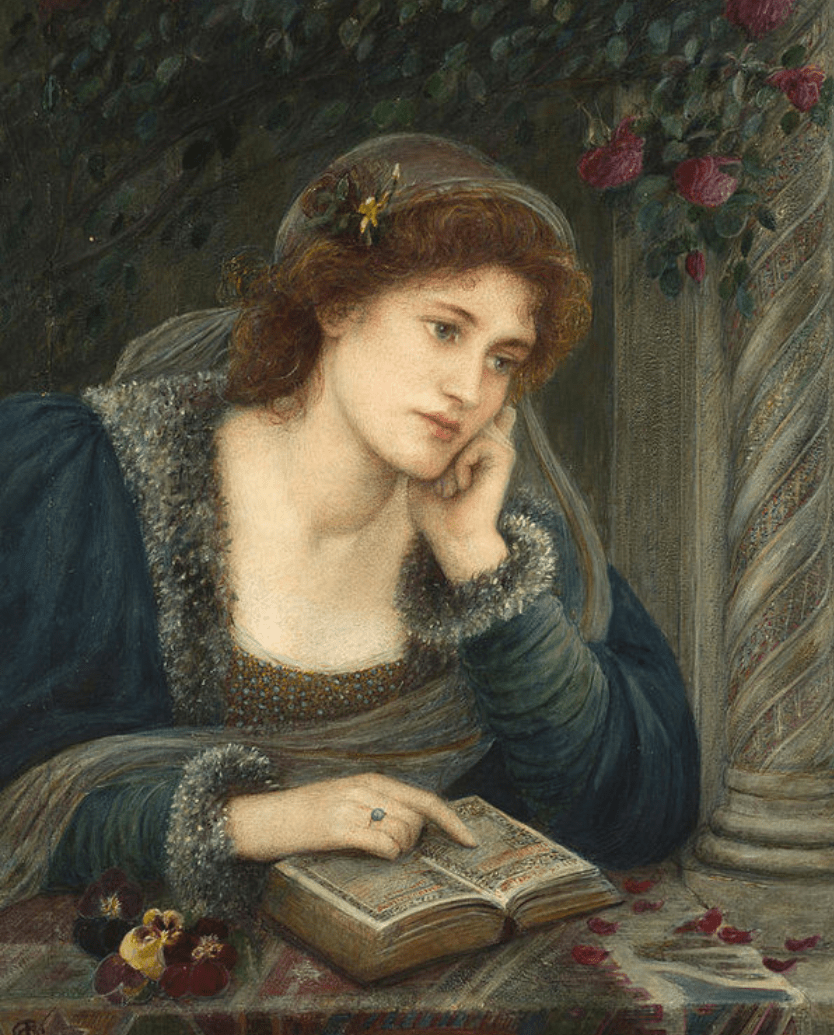You may remember the glamorous Melissa Lynn Herold from our interview with her last fall in which she unveiled her debut fantasy novel Heaven’s Silhouette: Iyarri Chronicles Book 1.
As it happens, Melissa also has more than fifteen years of experience using herbs to create stunning, damage-free hair dyes in all the colors of nature that she hand-blends and offers at NightBlooming — blends that might help you achieve some Pre-Raphaelite glamour with your own tresses, those stunning and iconic copper-reds and long, cascading waves of hair. What better time to experiment with some at-home beautifying?
By the Victorian era, ladies were auburn-bitten and eager have this color for themselves, she says. When the supplies of false hair in the right shades had been exhausted, many began dying their own hair with natural plan-based or herbal dyes. In his 1879 book The Hair: Its Growth, Care, Diseases and Treatments, Dr. Charles Henri Leonard wrote, “A strong infusion of saffron, to which has been added some carbonate of soda, if followed by an application of lemon juice or vinegar, will give a reddish yellow hue to dark-colored hair.”
We had an enchanting chat with Melissa on how to achieve these stunning reds and earthy browns on your own hair, using only pure plant matter and natural ingredients.

How did you come upon your knowledge of herbal hair dyes?
Sometimes disaster is what leads us down new paths. The first time I dyed my hair, it brightened everything to fire-copper and covered the whites I was already getting at 21. I was in love, and hopelessly hooked. But, as I learned, nothing fades like red dye. By the time my roots needed touching up the length was faded, so I’d pull the dye through the length to refresh the patchy color.
Soon enough, the hair I had fallen in love with was no longer the hair attached to my head. After years of dyeing, my hair broke off, inch by inch, from my hips all the way up to my shoulder blades. I developed a sensitivity to the chemical dyes, and each touch-up left my scalp red, irritated, and peeling. At its worst, my hair was a faded, patchy, straw-like broken mass of split ends, and my scalp was tender and red.
Over the next few years I consumed everything I could on herbal dyes and historical recipes, learning how it worked and how to blend henna with other herbs to alter the final color. Its strengthening properties held my horribly damaged hair together. I created Fire Genasi Herbal Hair Color and using that, slowly, joyfully, my hair returned to how I’d loved it best–long, healthy, and copper-orange. It also inspired me to write my first nonfiction book, Rehabilitating Damaged Hair Naturally.

Can you tell us more about how they work and how ladies in the Victorian Era were using them to get those beautiful Pre-Raphaelite reds?
Herbal dyes layer on top of your existing color, meaning that the final color is a blend of the lightness / darkness of your starting color and the color that you apply to it. You can see this going all the way back to the Victorian-era salons where some hairdressers in Paris claimed to be able to color “any hair not positively very black” into “the coveted hue.”
That is as much true today as it was then—herbal colors cannot lighten your hair. This also fit with the ideals of the time that “bleaching or dyeing the hair is never recommended” as the natural lightness or darkness of the hair was considered “the most becoming to the eyes and skin.” (In the Manual of Useful Information, 1883.)
This union of your starting color and the color of the dye allows you to keep the natural depth of variation in your own hair rather than getting a flat one-dimensional chemical color. In my case, my darker hairs are burnished copper, but my white hairs are bright, sparkling new-penny copper and look like natural highlights.
While the recipe earlier called for saffron, many women of the era also used henna imported from India. Henna dyes red-orange and is the basis for many of my herbal hair colors. By adding other herbs such as senna, hibiscus, and indigo, I can create a wide array of colors from soft rose-gold blonde all the way to black.

Here are some of my hair colors strand tested on ash blonde human hair. The natural hair color is on the far left, and then moving right, Rusalki Strawberry Blonde, Fire Genasi Copper, Kitsune Fox Fire Red, and Enyo War Goddess.
When looking at premixed herbal dyes, if they claim they can make your black hair blonde, there are likely undisclosed chemicals lurking inside that package. Also look for incorrect or misleading terms like “black henna” or “blonde henna.” Henna comes in one color, which is red, and while some of these might be simply misleading terms, it could be an indicator of a potentially dangerous henna compound.
All my dyes are free of metallic salts, PPD, or other harmful chemicals—they’re pure plant matter, just like the Victorians would have used. Even if you’re already using chemical dyes, you can safely transition from chemical dyes to herbal ones.
How are these hair colors mixed and applied?
There’s a magical, tactile quality to blending up herbal dyes that feels (and smells) nothing like the stinging, acrid-smelling chemical dyes. Although the method can vary depending on the color you’re after, the basics are the same: You mix the herbal components of the dye with a liquid of your choice (some use herbal tea, personally I love adding my Selkie Herbal Detangler for extra slip and easier rinsing) and then set the bowl someplace warm. Over the course of a few hours the dye releases. Then, you separate your hair into sections, work in the herbal mud, wrap it up so it doesn’t dry out, and let it sit. How long you need to leave it on varies with your color goals, but I leave my Fire Genasi on for three hours and then rinse it out.

Melissa created two special recipes just for Enchanted Living readers looking to get that perfect Pre-Raphaelite shade. You can either do it yourself, or — if you’re a bit on the lazy side — reach out and she’ll blend them for you. (And/or you may want to start with one of Melissa’s preblended herbal colors at Nightblooming.)

Rose Gold Pre-Raphaelite Henna Gloss
This subtle rose gold shade is inspired by the Pre-Raphaelite lady. It will show best on blonde to light brown hair. Blending it with your favorite conditioner makes this easier to both apply and rinse out and is perfect for just a bit of color.
You will need:
– 2 tb pure henna
– 2 tb pure hibiscus powder
– Water
– 1 c conditioner
Step 1—Heat the water until steaming.
Step 2—Add the henna to a bowl and slowly add the
water while blending until you get a mud the consistency of pancake batter. Cover, keep warm, and allow to dye release for 4 hours.
Step 3—Add the dye-released henna to 1 c of your favorite conditioner and blend well.
Step 4—Apply to damp hair, wrap with plastic wrap or a shower cap. Allow to sit at least two hours. Rinse.
A Pre-Raphaelite Copper-Red Herbal Mud
This beautiful pale ginger-gold color harkens to the shade seen on muses in some of the most famous paintings in existence. It is a brilliant, vibrant color that makes light hair shine and warms dark hair while conditioning. Remember, henna is immensely permanent! Test on a little shed hair from your brush to make sure you like the color before committing to your whole head.
You will need:
– 55 g pure senna
– 35 g pure henna
– 10 g ground ginger
– ¼ c dried chamomile flowers or calendula (marigold) flowers
– 2 c water
Step 1—Heat the water to boiling and pour over the dried flowers. Cover and allow them to steep for 15 minutes. Strain.
Step 2—Add the henna, ginger, and senna to a bowl. Slowly add the herbal tisane while blending until you get a mud the consistency of pancake batter. If you run out of tisane you can either brew more with the same flowers or just add more distilled water. Cover and allow to dye release for four hours.
Step 3—Apply to damp hair, wrap with plastic wrap or a shower cap.
Step 4—Allow to sit at least three hours. Rinse.
What’s the best way for a modern magical woman to get started with herbal dyes?
Some of the most iconic pictures of Pre-Raphaelite ladies are of them reading, and that’s where I recommend anyone wanting to begin using herbal dyes start as well.
I wrote Coloring Hair Naturally with Henna & Other Herbs to be the resource both novices and experts alike need for every step of their natural hair coloring journey.
Curl up with a book, brew a cuppa of Miruvor Long Hair Herbal Tea and enjoy
P.S. Supporting me on Patreon also gets you exclusive handmade products I don’t sell in the store, insights into my fantasy writing, and a 15% off Evergreen Discount at every product at NightBlooming.


































